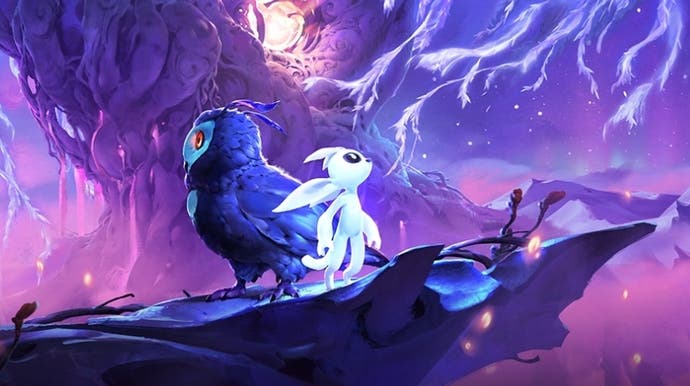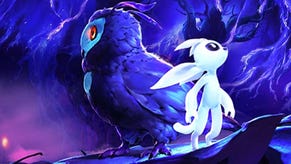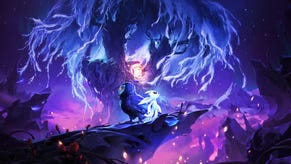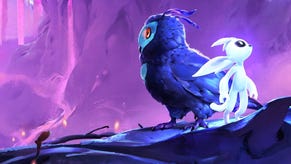Ori and the Will of the Wisps is a triple-A 2D Metroidvania
What's improved for Moon Studio's imminent Xbox outing.
Having played a good handful of hours with Ori and the Will of the Wisps, Moon Studio's follow-up to 2015's sumptuous Metroidvania, it's clear that a lot has changed. It's larger, deeper and somehow even more sumptuous, but one thing's exactly the same. It's still a video game that has the power to have me in tears within the opening five minutes.
Ori and the Blind Forest pulled that trick first time around the fate of Naru, a character so lovingly realised it was impossible not to be reminded of a loved one. This time it's all about Ku, the owl that hatches at the climax of Blind Forest and who it soon becomes clear has a disability - one that her new adopted family rally around to assist with.
It's an entirely wordless opening infused with so much warmth, humanity and that heart-soaring feeling that comes when seeing people come together in the face of adversity. I can't imagine being more moved by a video game this year, and on the strength of its opening alone Will of the Wisps is going to be every bit as wonderful as its predecessor.
There's more to it than that, of course. Much, much more - for this preview session we're afforded some five hours to play through what's only the game's first act, which should give you some impression of its size. It's not just about size, though, as the changes in this new Ori run deep.
The first - and perhaps most important to those that have played through the original - is to the combat. Blind Forest's combat was a strangely detached affair, by the producer's own admission. "The first Ori was really predominantly a platforming game at its heart," says Microsoft Studio's Dan Smith. "Exploration was definitely high up there, but I'd say combat was a little piece of that pie."
That's certainly not the case here - within minutes you're introduced to a much more direct form of combat as you wield a melee weapon, and soon after you'll also have a ranged bow and arrow with precision aim (which quickly ties into some deliciously tactile puzzles). It's all part of an enhanced physicality to it all - something which played a part in the first Ori, but is now more pronounced as you clamber around gloriously realised environments with your gloriously animated avatar. It feels sublime.
That feeling of movement is integral to Ori's appeal, and it's met by more diversity in your skillset. "We were really loved by our speed running community," says Smith. "They still continue to post new times. I think the fastest time in the world is around 14 minutes, which is insane. But when we went to the drawing board we didn't necessarily just want to rehash and make an Ori 1.5 - we wanted to make a really big statement and make a true sequel."
"You're now able to, on the fly, pick a lot of different abilities," says Smith. "The other thing that's very different is that we've really like sort of levelled the skill tree system. We had a more or less linear skill tree in Blind Forest. If you wanted something that was five ticks up, you had to invest in the first four spirit shards of really kind of like flattened the playground there. The rate with which you find the shards, you can freely equip them at any time, even in mid combo, you can go in and respec yourself, and then also give yourself a different layout of weapons and abilities. It's really offering this much deeper contextual layer of customisation for players."
Perhaps the most fundamental change, though, isn't necessarily the most obvious one. "Technically, the original Ori was a traditional 2D game," explains Smith. "Yeah, we had 3D models, we animated them we exported and imported 2D sprites into the game. We've gone with a full 3D pipeline now. And that's really given us a lot. I'd say first and foremost, Blind Forest was a 60 frames per second game, but the character animations themselves were 30 - now we have 60 frames per second character animations as well."
All of which explains the smoothness you'll feel when playing Ori and the Will of the Wisps. It's a sequel in the old-fashioned sense, one that's bigger, better and fixes so many of the gripes people had with the original. What's really fascinating about it, though, is how it's elevated the Metroidvania form to what looks and plays like a triple-A production, where the skill-trees branch off in new and exciting directions, where the sidequests are plentiful and where there's just oh-so-much game to get through. It's fascinating to see what's possible when the might of Microsoft is behind a Metroidvania like this, and it's not difficult to imagine we'll be seeing more Ori in the future as it becomes one of Xbox's staples - even if they're being understandably coy about any further instalments.
"We'll have to wait and see what we but I will say this it just brings a huge smile on my face to be able to say that Ori is a franchise now, you know," says Smith. "Once upon a time it was signed as an Xbox Live Arcade title. It looked nothing like it does now or even it looked nothing like when Xbox signed the game as it did when Blind Forest shipped. All these things kind of came together and made this powerful formula. And for me to sit here and to be able to say like, yeah, we shipped the Definitive Edition added some more content, some more features that people love. Now, here we are, making a true sequel. You know, we're not rehashing really much of anything. We're trying to go big here. And I'm very proud of the fact that we can say it's a franchise."










